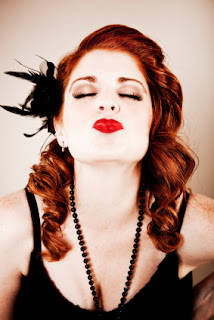 If the photography bug has bitten you hard and you want to
start doing some serious shooting, you might want to think about kitting
yourself out with some lighting gear. If you’ve never used your own external
lighting setups before, it can be a learning curve but the rewards are rich.
See below for some great tips on getting better photos with controlled
lighting:
If the photography bug has bitten you hard and you want to
start doing some serious shooting, you might want to think about kitting
yourself out with some lighting gear. If you’ve never used your own external
lighting setups before, it can be a learning curve but the rewards are rich.
See below for some great tips on getting better photos with controlled
lighting:
1 Okay, first things first. Great lighting can be
let down by poor composition and posing, especially when it comes to portraits.
Take the time to set the scene properly. Watch for shrugged shoulders,
stiffness, slouching and striking features hidden by poor positioning. You can
also make use of props and accessories, and be sure to pay attention the
background of your photos – it is better to enhance than detract from your
subject.
It can be a little overwhelming playing
director and having to guide your subject so specifically, but the results can
be stunning. Try and breath some natural life into what can be seen as quite a
rigid situation – tell a joke to get natural expressions of happiness and
laughter, or give a totally left-field direction and you might just strike a
gold pose.
Just remember to keep snapping and try different things.
There are many lighting setups, and once you
learn the ropes you will be an unstoppable lighting machine that will have many
ideas on what works for you. Portraits tend to be shot with a three-point
lighting setup, and that is what we will focus on.
The
Three Points:
1. Main (or Key) Light:
This is your main lighting source, and is the primary point of
illumination of your subject. You can
use a speedlite [ADD LINK] for this or a studio lighting kit [ADD LINK],
sometimes referred to as flashes or strobes.
If you are using a speedlite, get it off your camera! On-camera flash can
cause flat lighting, whereas you can use it to much greater effect off the
camera with a flash trigger.
By using an off-camera light source you can use shadows and highlights to
enhance bone structure, skin tone, eyes and other features of your subject’s
face that you may not normally achieve.
No matter how good you get, with lighting comes testing and repositioning
until it looks right. This can take an indeterminate amount of time! Be
patient.
2. Fill Light
This light will help soften harsh shadows caused by the main light. This
will improve overall results and give your shots a more professional edge,
though it is optional and if you are starting out and only have one light you can
try reflectors to soften hard edges.
In terms of positioning, if the main light is to one side of the camera,
the fill light is typically placed on the opposite side.
3. Background Light
As you might have guessed, this one lights the background. It will light up whatever happens to be in
the background, which is essential if you have gone the whole hog and put
together a set with props and the whole shebang.
The light is placed typically behind the subject, and is pointed at the
background. Again, this is an option depending on your exact shooting
situation, but if you don’t have a background light you can get away with using
a dark backdrop in its place.
And there you go! As with anything in photography, it will
take practice and you will be sure to have a ball while improving your skills.
You won’t believe the difference some controlled lighting can make, so do feel
free to check out our extensive range online, or pop into one of our stores to
ask our knowledgeable staff.
Linky linky:
Linky linky:













0 comments:
Post a Comment